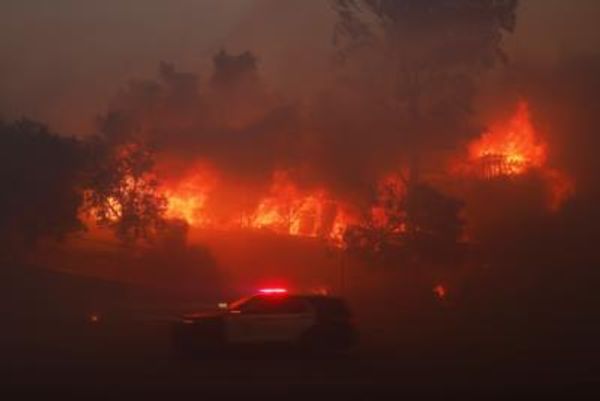
People living in Assam, in north-east India, are usually stoical about the flooding that occurs to a greater or lesser extent every monsoon season. But this year they say the situation is dramatically worse. “It was like a scene from Titanic,” one man told local media of the rising waters that have flooded all but two of the state’s districts.
In some places entire villages are under water, while across the state 114,000 hectares of crops have been submerged and 5,000 livestock have been washed away. For those that remain, fodder is running out.
Since April, 82 people have died in the rain and landslides, including two police officers who were swept away on Monday as they attempted a rescue.
In the worst-affected areas, life has been reduced to huddling on any tiny patch of raised dry ground that people can find. Families living under tarpaulin tied to bamboo poles are using dwindling supplies of cooking gas to cook basic meals. There is an air of despondency over all that has been lost: furniture, utensils, documents, irreplaceable photos.
“There was no time to save anything, it all happened so fast. My house was made of bamboo. It just broke. I saw my possessions vanish in a flash,” said a woman from the village of Nagaon who was sitting with her children and some saucepans on a bed that had been raised above the swirling waters with the help of bamboo poles.
The unending rain has raised the water level in the Brahmaputra River and its tributaries, flooding villages. Barpeta district in Lower Assam is the worst hit.
The Assam state disaster management authority has said more than 4 million people, including 1 million children, have been affected. It hopes to send trains carrying relief including diesel, petrol and medicine to the affected areas soon.

Pregnant women, mothers with infants, elderly and sick people have been the worst affected. “My mother is 84 and has a heart condition. Her medicines were swept away with everything else. I can’t move while there is water all round and they are predicting more rain,” said Ashok Bohra, a local journalist.
Those who are not living in tents on the roadside are in relief camps, where conditions are fast becoming congested and insanitary.
Some images of the flooding have been striking. In the state capital, Guwahati, one man was seen strapping together wooden planks for a raft and placing a red plastic table on top with bottles of drinking water, candles, and matchsticks. He sold his wares while rowing through the muddy waters.
Elsewhere, a father moved his baby to safety by carrying it in a washing bowl in waist-high water.
The Indian army has been taking food parcels to marooned villagers. Soldiers are moving from one place to another in speedboats and inflatable rafts to rescue those stranded.
In Guwahati, where the waters are receding, Mazin Mukhtar, an educational theorist, is turning the government schools where he works into relief camps for those who need shelter. “Some of our employees who have homes further away have seen a lot of destruction,” said Mukhtar. “But when these floods recede, families will rebuild their makeshift bamboo homes in the same place, because that’s where their fields and livelihoods are.”

Assam’s chief minister, Himanta Biswas Sarma, told the Deccan Herald newspaper that the rain was unprecedented. He said he was in regular touch with the federal home minister, Amit Shah, about help with the disaster.
Experts say the rain has been double the usual amount, and is an example of the sort of extreme weather event made more likely by the climate crisis.
Meanwhile in the Indian capital, Delhi, a prolonged heatwave has made life miserable since mid-March, and in surrounding states the abnormal heat has reduced the wheat yield by between 18% and 30%.
Abinash Mohanty, a programme lead at the Council on Energy, Environment and Water, said the climate crisis, along with unsustainable landscape planning, was responsible for the flooding.
“According to our analysis, there has been a twofold increase in extreme flood events in Assam in the past five decades,” Mohanty said. The only way forward, he added, was for people in Assam to become “flood-ready” and adapt to the changing weather patterns.







